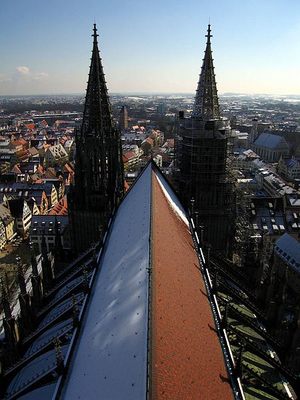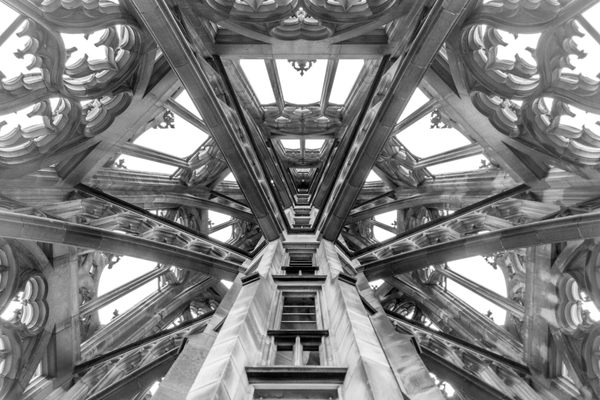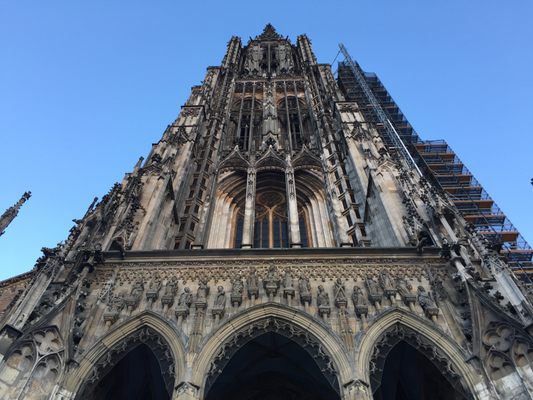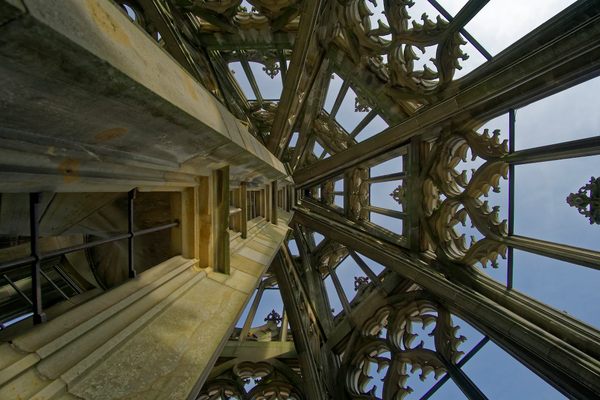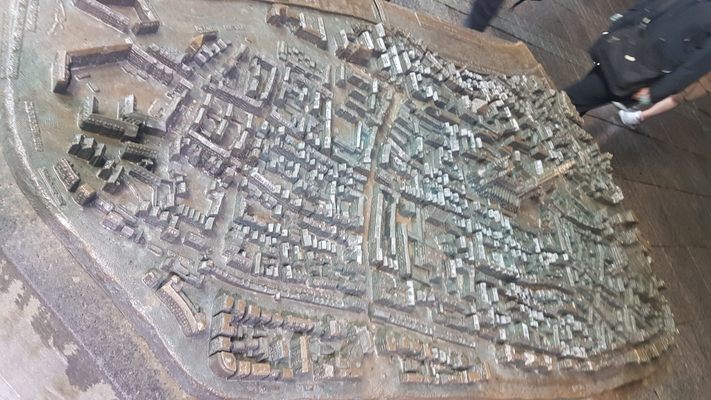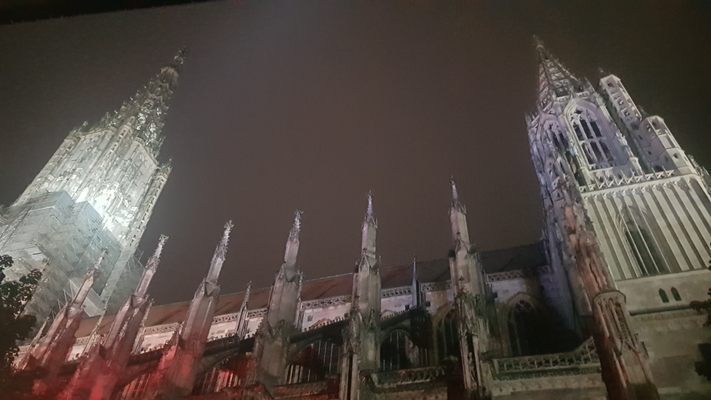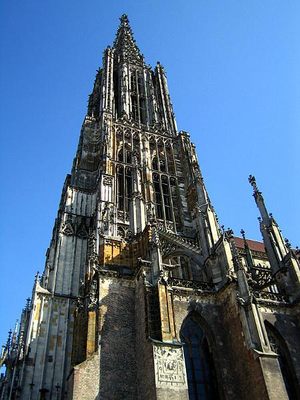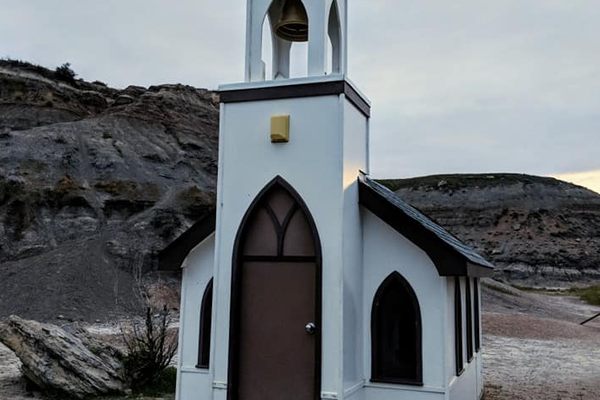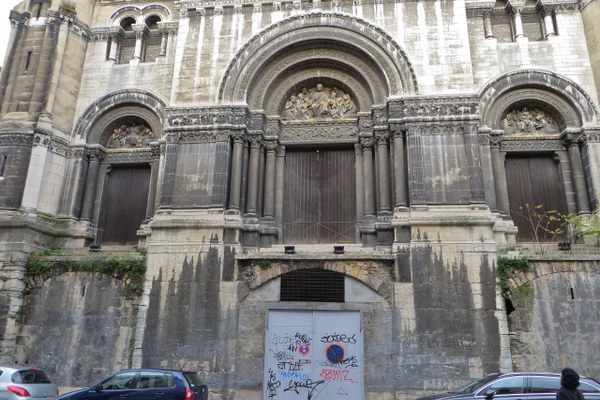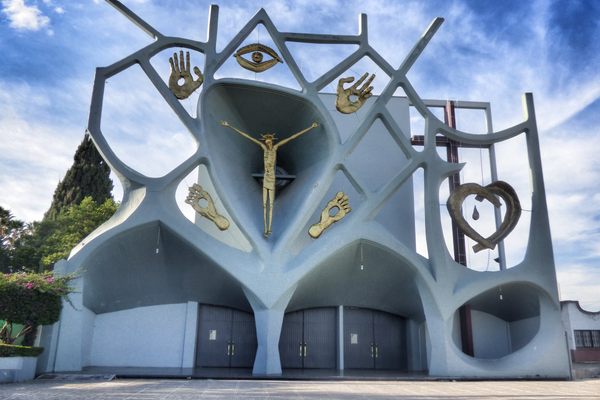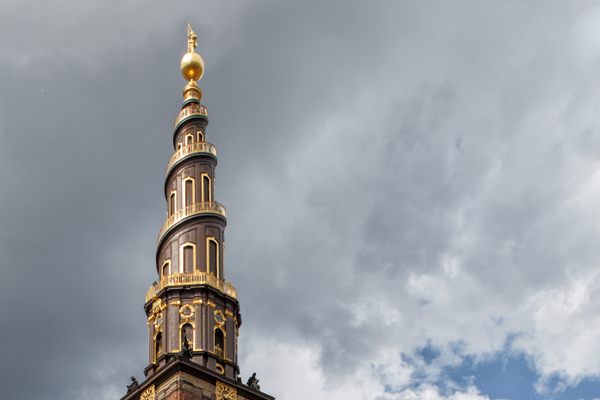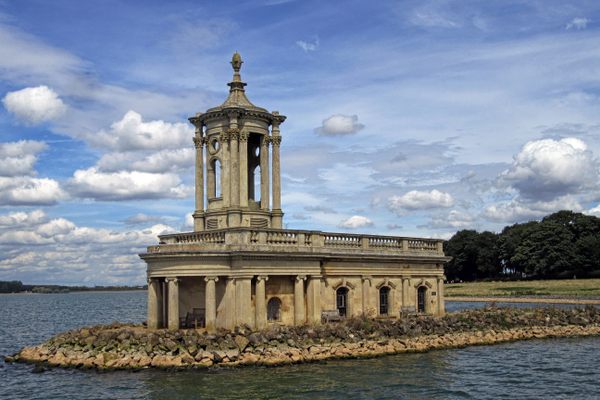About
Not for vertigo sufferers or the claustrophobic, the final, spiral staircase in the Ulm Minster is a tight fit for one person, but the narrow climb to the top of the highest church in the world delivers a spectacular view as the reward.
Finished in 1890, the Minster is the fourth tallest structure built before 1900 at 161.5 meters, and for a short period of time was the tallest building in the world (yes, taller than the Great Pyramid). Despite not being a cathedral, the top of the steeple is higher than any other Christian church, even St. Peter's Basilica in Vatican City. If finished, the Sagrada Familia in Barcelona will be about 10 meters taller and there are other religious buildings taller, such as the minaret on the Hassan II Mosque in Casablanca, but that doesn't subtract from the monumental height of the tallest steeple in Ulm.
With 768 stone steps winding straight up to 141 meters, the climb to the top can be a tiring, dizzying experience, but views extend out across the Swabian Jura (which Ulm lies on the edge of) and south to the Alps. The cooling towers of a nuclear power plant in Gundremmingen can be made out to the east.
The building itself was started in 1377 as a Roman Catholic church. During the Reformation the congregation converted to a Lutheran church with the rise of Protestantism in 1530. In 1543, construction halted with the steeple at 100m. In 1817 it restarted and the final height was reached with the completion in 1890, just beating out the Cologne Cathedral. The spires were actually planned to be shorter, but another couple of meters were added to beat out Cologne's towering 159.7 meters. During WW2 Ulm was heavily bombed and many historic buildings were destroyed, but the church was barely touched and the steeple remains intact.
As a prime example of Gothic art and architecture the church is and contains many examples of medieval culture. The pews are oak with busts carved by a famous German sculptor (Jörg Syrlin the Elder) and the pulpit canopy was created by his son (Jörg Syrlin the Younger), also a well known sculptor. Many of the other pieces of art date back to the 14th or 15th century. The organ held the record for largest in the world for a period, and was played by Amadeus Mozart.
Related Tags
Community Contributors
Added By
Published
June 11, 2012


